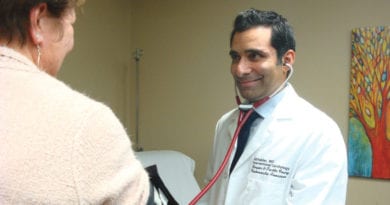Cost, Stigma Pose Barriers to Accessing Care for Mood Disorders
Breaking Through
The cost of treatment and access to quality, affordable care, along with stigma, are major barriers to Americans seeking help for mood disorders, according to the 2021 Mood Disorder Survey conducted by the Harris Poll on behalf of the National Alliance on Mental Illness (NAMI).
Mood disorders are a common type of mental illness and include bipolar disorder, major depressive disorder, and others. The survey questioned three groups of American adults: those who have been diagnosed with a mood disorder, those who are caregivers, and those who have no experience with mood disorders.
Among people who have a mood disorder, about half (52%) say cost prevents them from trying a treatment they’re interested in — a proportion that is much higher among the uninsured (74%). In addition, 61% of those without insurance report stopping a treatment because they could no longer afford it.
The vast majority of all adults — 84% — agree that stigma is a major barrier to people accessing treatment for mood disorders, and 87% believe that mood disorders, if left untreated, have significant economic and social impacts.
Yet despite this sympathetic attitude, 37% feel fearful of being around people with mood disorders. Sixty-one percent of people living with a mood disorder say people treat them differently after they learn they have been diagnosed with a mood disorder, and 76% say people around them do not understand what it’s like to live with a mood disorder on a daily basis. These findings emphasize the need for a better understanding of mood disorders to help eliminate the fear and misperceptions that lead to stigma and discrimination.
On the positive side, even while experiencing daily symptoms, 77% of adults with a mood disorder feel their symptoms are well-managed. While about half of those with mood disorders (48%) currently use routine or maintenance psychiatric medication, significant proportions use non-psychiatric treatments such as psychotherapy (25%), guidance or support from other people with lived experience (23%), or complementary health approaches (28%) such as exercise, meditation, or dietary supplements. Nearly half of people with a mood disorder (47%) say supportive personal relationships have been helpful in both the management of symptoms and the recovery process.
While the COVID-19 pandemic has posed new mental-health challenges for many, it has also increased acceptance of mental-health conditions, with more than half of all adults (52%) saying they have been more open with others about their mental health since the pandemic began. The vast majority (91%) agree that mental health challenges can affect anyone, but 30% say they are unable to get the support they need for their mental health during the pandemic. Telehealth may be part of a solution, 79% of those with mood disorders who have taken advantage of the technology say it has made it easier for them to access mental healthcare.
“While the ongoing impact of the pandemic shines a light on the widespread need for better access to affordable, quality mental healthcare in our communities, there is a clear need to better understand mood disorders and reduce barriers to care,” NAMI CEO Daniel Gillison Jr. said. “The high number of Americans who say they are fearful of people with mood disorders is alarming. Mental illness can affect anyone, and acceptance is key to address the needs of Americans with mental-health conditions.
“The status quo is unacceptable,” he added, “and we must do better for people with mood disorders through a holistic approach that recognizes that there is no health without mental health.”
According to NAMI Chief Medical Officer Dr. Ken Duckworth, “the survey points out that, once people with mood disorders get care, they do well and can flourish. The survey also found an increased openness in discussing mental health, which is a positive step, but more needs to be done to increase access to care.”



